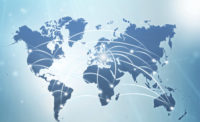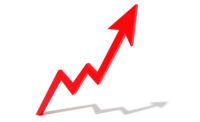Personal protective equipment (PPE) has been and will always be among the primary responsibilities of businesses worldwide. Continuous growth in industrial activities, pharmaceutical production and food & beverage consumption over the years has only fueled the odds of employee injuries and amplified various health risks.
An increasing workforce and adoption of new technologies during production and service has considerably expanded the scope of challenges in ensuring worker safety. Although stringent regulations across developed regions like America and Europe have helped businesses implement effective safety codes, provide required training and procure suitable PPE, there is still a significant gap in understanding different industrial hazards and the risks they pose.
Consistent investments toward PPE for maintaining the safety of workers in heavy machinery environments, such as factories, construction, wastewater plants, ports, and food processing units, will impact personal protective equipment market outlook over the coming years.
PPE suppliers and distributors have been making efforts to expand their portfolio through organic as well as inorganic pathway. An example would be Lyreco’s acquisition of European B2B PPE distributors Intersafe and Elacin. PPE industry forecast will also be influenced by evolving industrial trends, as the number of women in the global workforce increases every year to chart a positive growth curve.
In July this year, leading U.K. port operator Associated British Ports became the first one in the region to provide exclusive range of PPE for women, after successful trials.
Gradual rise in infrastructure spending, production activities along with changing workplace culture will significantly bolster global PPE market size, which is projected to surpass annual valuation of US$70 billion by 2024.
Evaluating future prospects for personal protective equipment manufacturers and suppliers
Food applications
The food processing industry brings serious challenges for providing both worker and product safety. Environmental Health and Safety (EHS) professionals have to assess risks and watch out for respiratory and eye hazards from chemicals, gains, flavoring agents and spices, among other ingredients. Noise-induced hearing loss is also a major factor contributing to illness among the food sector personnel.
In June 2019, some workers at a Tyson Foods plant in Northwest Arkansas were hospitalized after being exposed to a cleaning agent. The incident resulted in one of the employees being critically ill while another was also in a serious condition.
Such accidents at food processing companies demonstrate the importance of safety training and providing respiratory PPE as well as other necessary equipment. Use of suitable PPE also helps to avoid common injuries like burns and cuts in the food service industry, while mitigating possible damage against falls and fractures. Disposable PPE including gloves, aprons, kitchen footwear ensure improved employee safety in fast-food service businesses and at the same time maintains cleanliness and quality of food.
Europe stands as a vital regional ground for the global PPE industry, given the massive expansion of the food and service sector in the region. Germany is anticipated to be a major revenue pocket where food processing applications will play a key role in boosting overall safety standards across the region.
Oil & gas sector
On 6 September 2019 two rig employees were injured in Texas in a fire at the Block T Petroleum site in Henderson County. OSHA was investigating the incident but the injuries were not deemed as life-threatening. Fire hazard is only one of the many risks oil and gas industry workers face.
Toxic inhalations, broken bones, brain as well as back and neck injuries are some of the common cases observed across oil operations worldwide. Leading PPE providers deliver vital solutions to O&G companies to ensure worker safety, including footwear respirations, retracting lifelines, gloves, along with hearing, fall and face protection gear.
It is estimated that oil and gas applications will account for over US$12 billion of the total personal protective equipment market share by 2024. The sector will be mainly driven by increased exploration activities and demand for petroleum products globally.
Higher O&G investments undeniably lead to higher spending on worker health and safety, to avoid fatal injuries and costs related to payouts. The upstream oil & gas sector in the U.S. recorded a severe-injury rate of 148.9 per 100,000 workers during the 2015-16 period, endorsing the substantial need for PPE during heavy equipment use, handling hazardous materials or other oil rig operations.
The top 12 publicly traded oil giants had collectively amassed revenues of nearly $US1.69 trillion in 2018, which invariably shows the considerable operational requirements worldwide in the O&G sector and the tremendous opportunities for PPE manufacturers. The potential is expected to further expand with more oil and natural gas drilling activities being planned across the Permian Basin near U.S., as well as near the Middle East, Europe and some sites in Asia-Pacific.
PPE deployment in other industries
With the surge in consumption of pharmaceutical drugs, appliances, automobiles and transportation services, there will be incessant demand for metals, industrial chemicals and ingredients, implying substantial health risks for employees in the chemical and mining sectors.
Chemical applications are expected to contribute over US$7.5 billion in remunerations to global PPE industry size. Deployment of safety harnesses, hard hats, hearing protection and protective footwear will also catapult with booming construction industry in developing nations.
Global Market Insights Inc. has a market report dedicated to global personal protective equipment market, available at:
https://www.gminsights.com/industry-analysis/personal-protective-equipment-PPE-market



